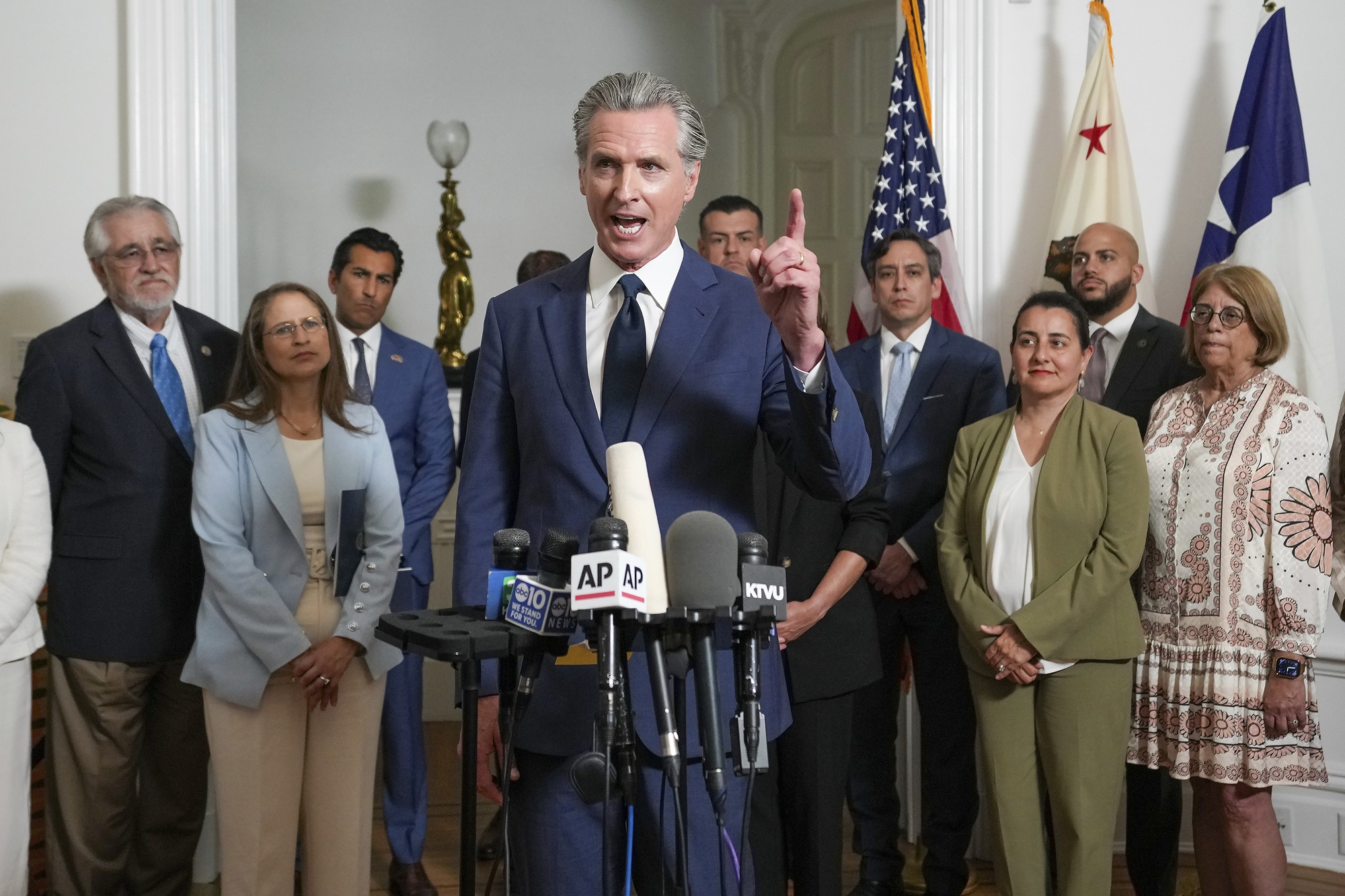In a move that could reshape the political landscape of America, the two largest states — Texas and California — are locked in a heated race to redraw congressional district lines ahead of the 2026 US midterm elections. But beneath the headlines and political posturing, what’s really at stake is the voice of the American people — and the future of democracy itself.
In Texas, the Republican-led legislature is pushing aggressively to redraw district boundaries in a way that could hand them five additional seats in the US House of Representatives. This push, driven in part by former President Donald Trump’s desire to safeguard the GOP’s fragile majority, has set off alarm bells among voting rights advocates who see it as a blatant attempt to manipulate electoral outcomes.
The Texas House passed its redistricting bill on Wednesday after a dramatic two-week standoff that saw Democratic lawmakers flee the state to block the vote. Despite their efforts, the Republican-dominated Senate is expected to approve the measure, sending it to Governor Greg Abbott for final approval.
Meanwhile, California is not staying silent. Governor Gavin Newsom, a rising star in the Democratic Party and a likely contender for the 2028 presidential race, is leading a countermove. The California legislature, controlled by Democrats, has approved a new map of its own — one designed to add five Democratic seats, effectively neutralizing the Texas gains.
“This is about protecting the soul of our democracy,” said California Assembly Speaker Robert Rivas. “We will not sit back while authoritarian tactics hijack our political system. Today, Californians take a stand.”
The people of California will now vote in November on whether to approve the plan, which bypasses the state’s usual independent redistricting process — a risky but calculated response to what many see as a national crisis in fair representation.
The tension is spreading. Other states, including Missouri, New York, Illinois, Florida, and Ohio, are now being drawn into what’s becoming a nationwide power struggle. Trump praised Missouri’s move on social media, claiming yet another political victory. But New York’s Governor Kathy Hochul pushed back, calling the Republican effort “the last gasp of a desperate party clinging to power.”
Former President Barack Obama weighed in, calling California’s approach “measured and necessary,” and praised Newsom’s resistance to what he described as a partisan hijack of the democratic process.
However, California faces a tougher challenge ahead. Unlike Texas, which can pass redistricting laws through its legislature, California’s plan hinges on voter approval in a referendum. While voters have historically favored independent oversight, a recent poll shows that many Californians are open to making an exception — viewing this as a justified counteraction.
Republicans are already challenging the legality of the move in court, but California’s Supreme Court dismissed the initial lawsuit this week.
“This isn’t just about maps,” Governor Newsom said in a press briefing. “It’s about values. It’s about fairness. And it’s about standing up to forces that want to control our country without listening to its people. We’re not backing down.”
As the 2026 midterms loom, what’s unfolding in Texas and California is more than a redrawing of lines — it’s a defining moment in the fight for political integrity, transparency, and the future of American representation.




